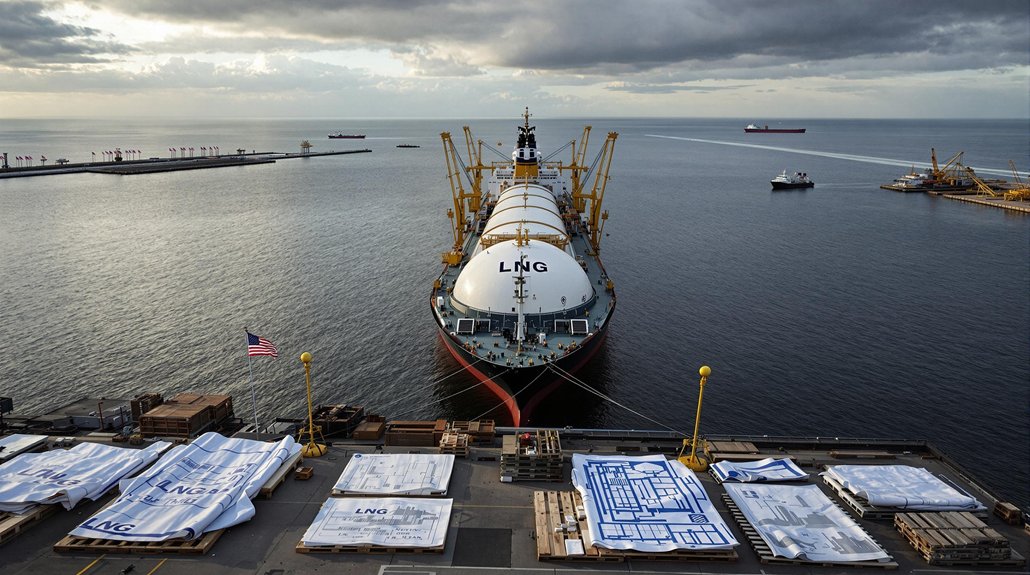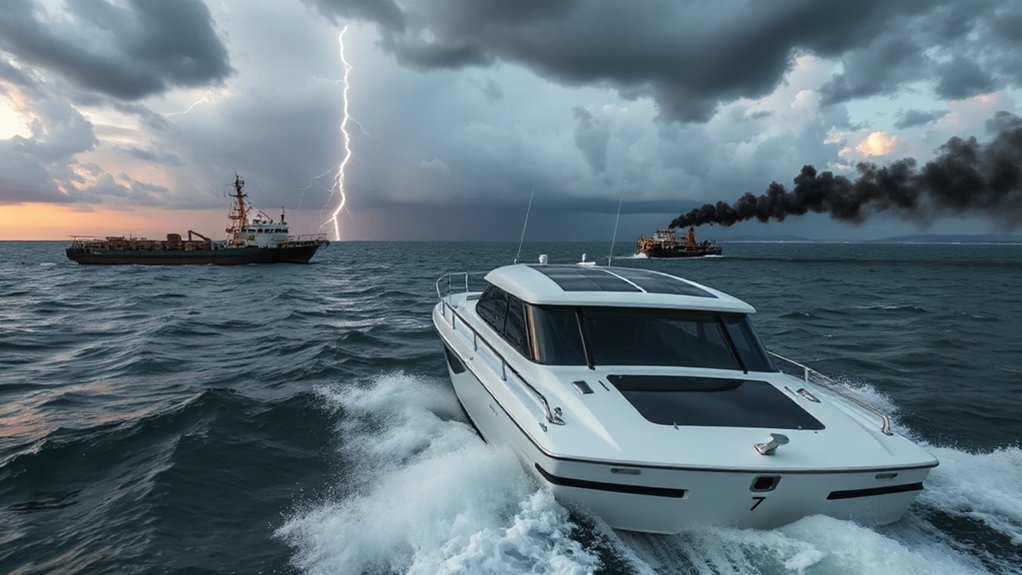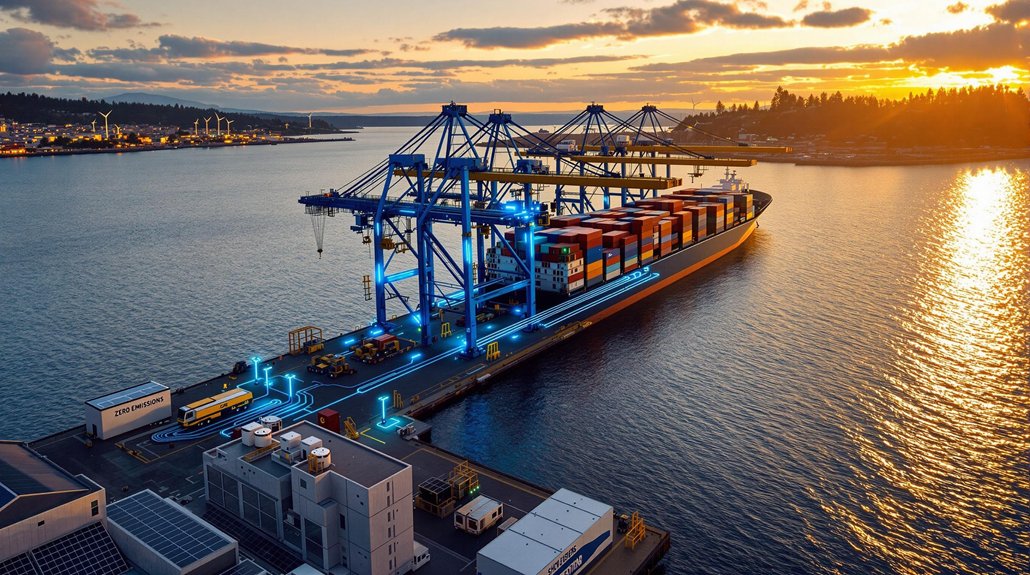American LNG exporters can’t comply with a rule requiring shipments on US-built vessels because—surprise!—zero American LNG carriers exist. The mandate starts at 1% by 2028, climbing to 15% by 2047. US shipyards lack technology and skilled workers for these specialized ships. As the world’s largest LNG exporter, America risks losing market share to foreign competitors. Long-term contracts are now in jeopardy. The industry’s hard-won global dominance hangs in the balance.
American LNG exporters are slamming into a regulatory brick wall that threatens to derail their global dominance. A proposed rule requiring US liquefied natural gas exports to ship on American-built, American-flagged vessels sounds patriotic on paper. In reality? It’s a logistical nightmare.
Here’s the kicker: zero US-built LNG carriers exist today. Not one. Building them would take decades, yet companies are expected to start compliance by 2028. Makes perfect sense, right?
The initial requirement seems modest – just 1% of exports by 2028, climbing to 15% by 2047. But even this gradual approach ignores a fundamental problem. US shipyards simply can’t build these specialized vessels. They lack the technology, infrastructure, and skilled workforce needed.
Meanwhile, South Korea and China dominate the global LNG tanker market. The Center for LNG has warned these measures could destabilize long-term contracts and significantly increase costs for the industry.
America proudly claimed the title of world’s largest LNG exporter last year, with exports jumping 12%. That crown won’t last long if suppliers can’t deliver. Global buyers aren’t stupid. They’ll flee to competitors if American companies can’t guarantee delivery because of vessel restrictions.
The timing couldn’t be worse. The industry already faces a tsunami of regulatory uncertainty. Federal environmental assessments for major LNG projects are under court-mandated review. Legal battles rage over project authorizations. NextDecade’s Rio Grande LNG faces significant hurdles after the U.S. Court of Appeals vacated project authorizations in August 2024. And now this.
Local opposition isn’t helping either. Environmental groups continue challenging expansions through lawsuits, citing deficiencies in environmental justice and air quality assessments. More delays. More costs.
The economics get uglier by the minute. US-built ships would cost considerably more than foreign-built vessels. Those costs get passed down the line, making American LNG less competitive globally.
Long-term contracts are the backbone of the LNG industry. They provide stability. Predictability. This new rule threatens both. If exporters can’t comply – and they can’t – established supply chains collapse.
American energy dominance? Nice while it lasted.
References
- https://www.spglobal.com/commodity-insights/en/news-research/latest-news/natural-gas/042325-us-lng-industry-warns-compliance-impossible-with-new-maritime-restrictions
- https://energynews.pro/en/united-states-lng-projects-face-regulatory-and-environmental-challenges/
- https://www.ctrmcenter.com/blog/industry-news/na-lng-exports-to-increase-markedly-despite-regulatory-challenges/
- https://gasoutlook.com/analysis/us-lng-legal-woes-may-continue-despite-trump/
- https://www.americansecurityproject.org/white-paper-strategic-implications-of-u-s-lng-exports/








